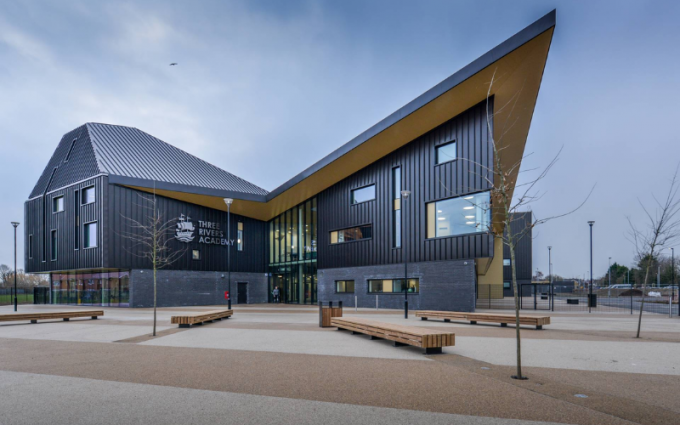Thrive Licensed Practitioner, Lucy Bone, explains how outdoor learning helped to transform the behaviour of two boys who were struggling to stay in class. Read on to discover the role that Thrive played in the process - including how Thrive-Online allowed her to get buy in from her senior leadership team and evidence the boys' progress.
The need for a new approach
We started a unique forest school provision here at Maple Cross Junior Mixed Infant and Nursery School, in Hertfordshire, in the autumn term of 2020 because we had two boys who could not be in a classroom. It was very different to conventional forest school sessions, where whole classes will have an hour or two outdoors every few weeks. We educated these two boys outdoors for almost six months, using the environment as a setting to facilitate nurture and to work on their emotional resilience.
The two boys’ needs were very different – one was an introvert who suffered with high levels of anxiety. The other would run out of the classroom and had a lot of avoidance issues. Both were in Year 2 and we were worried about the transition to Year 3 as we knew that they were not able to access their learning because of their behaviour. They weren’t at a level where an outside agency would give them support and we knew that they would not be ready for the step up to Key Stage 2. We decided that the best way to help them was to do something very different to support them so we came up with the forest school concept. We’re very lucky here because we have a woodland area in our grounds and we felt that completely changing their environment was what was needed.
Getting buy in
I had to pitch the idea to our governors to get their approval. As a school, we have embedded the Thrive Approach which helps us to support all of our children’s emotional wellbeing. This includes an online profiling and action planning tool and I used data from here as a way of benchmarking where the children were with their emotions and to evidence why they needed such a radical solution. That helped a lot to get the governors on board and they gave me a budget of £1,000 to cover essential resources.
Our Headteacher and Assistant Headteacher were also supportive so everything began to fit into place. As part of getting approval for the plan, there were two things that I had to commit to. One was that both children had to show progress; if this didn’t happen then we would have to review our provision to make sure it was right for them. I also had to show that all pupils could access the forest school, which we did, with each class having a session every six weeks.

Thriving in the outdoors
To support these children, we took all aspects of Thrive and moved them outdoors. Most of our activities involved mud. We got them both one-piece waterproof suits and wellies so that they could jump in as many puddles as they liked without having to worry about getting their clothes wet or dirty.
Throughout the winter, we cooked snacks on a campfire and we used the plants and animals we were surrounded by to help them develop a sense of empathy. We also focused on decision-making and communicating choices to help build their resilience. We did a lot of sensory activities because both boys were on sensory overload. While this was going on, we carried out intense profiling and action planning using Thrive-Online so that we could assess where they were in terms of their development and make sure we were using the right strategies to support them.
At first, they would both have regular outbursts and I would use the same responses with them to try and give them consistency and a sense of safety and predictability. We were able to push their comfort zones gently, and over time, in a controlled environment, to increase their ability to regulate their emotions to prepare them for an eventual return to the classroom.
As we moved forwards, we brought their classmates out to them to join in some sessions. We did activities like building dens so that each child had his own space where no one else was allowed in unless they were invited. When they were in class they were both, at times, rude and destructive, so I understand why their teachers found it hard, but that meant they had a strong feeling they didn’t belong in class and, as a result, they were very isolated. By building the dens and allowing them to choose who came in, we were giving them a sense of control and belonging.
Building resilience and boosting attendance
We saw a marked improvement in their behaviour within six weeks. They started to want to come to school and we could see their resilience had improved. At this point, we started to reintegrate them with their peers and the classroom environment. We started to bring them back in to some lessons.
We reintroduced English and Maths first, making sure that everything was done in a gentle and positive manner to keep building their confidence. At this point, we were still working towards learning goals, but not necessarily in a conventional way.
Instead, we took more of an Early Years approach and encouraged them to follow their interests so they learned what they needed to in a way that enthused them.

For example, one of the children was really focused on video games and we wanted him to be able to connect him more with reality. We knew he loved dinosaurs so, in forest school, we created ‘dinosaur land’ with him and we produced a film about it. We wrote a script together and really encouraged him to develop his skills by getting involved, which he loved because he was so keen on dinosaurs.
Returning to the classroom
After six months, they were doing every morning in classroom and every afternoon in forest school. I supported them in the classroom so that we could maintain a consistent approach and continue the relationship they had built up with me.
In September 2021, a year after we started working intensively with them, both children returned to the classroom full-time. They still have 45-minute forest school sessions four times a week, but they are now able to cope with life in the classroom without displaying the problematic behaviours they did previously. They still need emotional support so I think they will continue to have Thrive time for the foreseeable future, but this will help them to be able to stay in class.
A whole-school approach
Our approach has helped these two boys and many other pupils here at Maple Cross. We carried on with the forest school during lockdown when vulnerable pupils and the children of key workers were coming into school. Being outside and doing so many activities in nature helped to build their resilience during that difficult time.
When things started to return to normal, we really wanted to use our outdoor Thrive activities with a focus on all children – not just to use it reparatively. Our caretaker and I set up a woodwork session for our older boys who sometimes lacked self-confidence and found it difficult to concentrate on activities for a long period of time.

We used these sessions to build go-karts with them, focusing on building their confidence and making it really good fun for them. For the girls, we wanted to use creativity to explore emotions with them so we worked together to make a fairy garden where we could look at feelings using different characters in the garden. I know that sounds very gender specific, but it’s what we found our children needed.
For us, the forest school has given us another way to engage with and support our children. Spending a winter outside with those two boys was certainly a unique experience for me – but it achieved the right result and it’s benefited our whole school, not just pupils in crisis. Sometimes, you just have to be brave and think ‘this isn’t working - what can I do differently?’
Pass it on
Small actions can lead to a big ripple effect. If you enjoyed this post or found it helpful, please consider supporting us in our mission to help every child and young person feel safe, supported and ready to learn by sharing it using the social media buttons below.
Want to join a like-minded community of senior leaders and classroom staff benefitting from insights and strategies to improve attendance, behaviour and attainment? Add your email address below. (It’s easy to unsubscribe).

_680.jpg)
_680.png)
_680.jpg)

